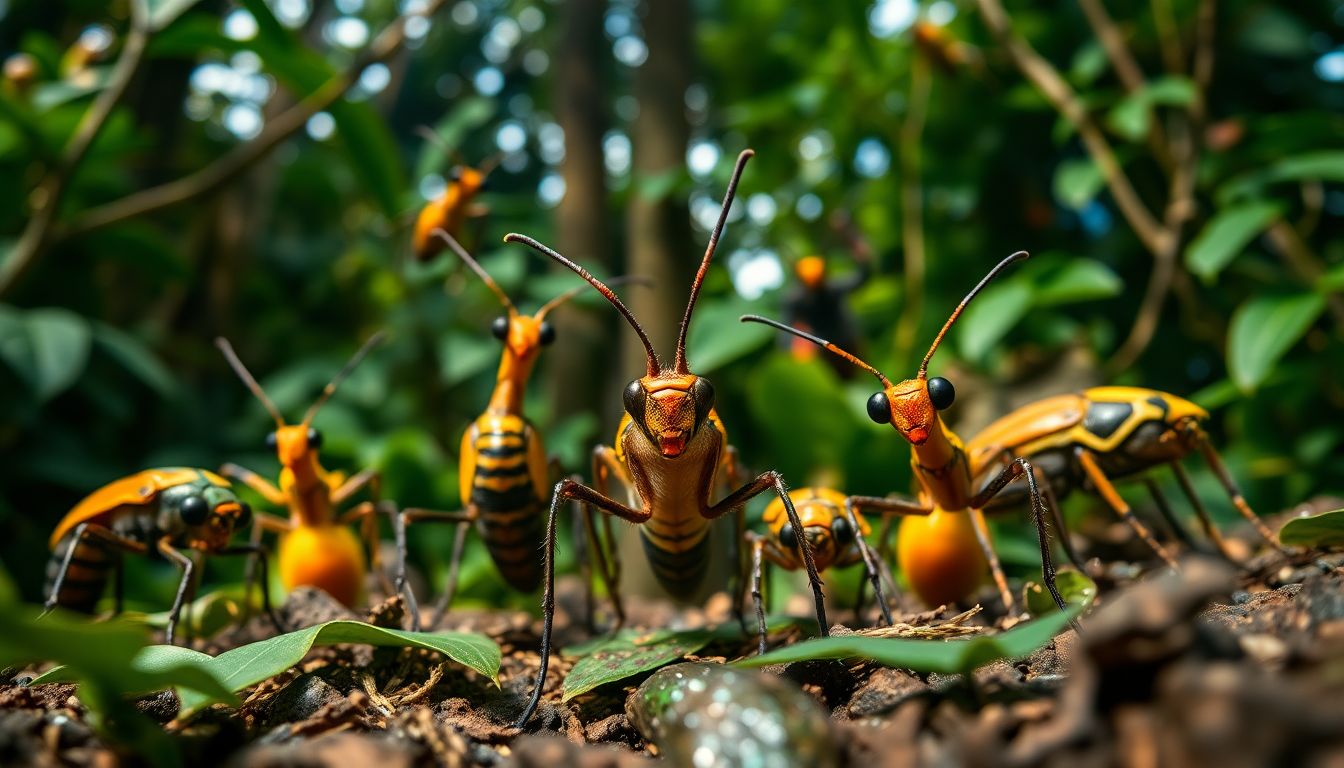
Did you know that insects make up about 80% of all known animal species? These tiny creatures are more than just pests. They play crucial roles in our world. Often overlooked, they boast surprising abilities and behaviors. This article reveals ten incredible insects. You'll learn facts that will amaze you!
The Bombardier Beetle: Nature's Chemical Warfare Expert
The bombardier beetle is a master of defense. It protects itself using a unique chemical reaction. It sprays predators with a hot, irritating liquid. This makes it a tough meal to handle.
How it Works: Chemical Reaction
Inside its body, the beetle mixes hydroquinones and hydrogen peroxide. When threatened, it combines these chemicals in a reaction chamber. This causes an explosion! The resulting spray reaches boiling temperatures (around 212°F). The beetle accurately directs the spray up to 7.9 inches. This gives it a good chance of escaping predators.
Evolutionary Significance
How did this complex defense system evolve? Scientists think it developed gradually. Small improvements over time made the beetle better at surviving. This amazing adaptation shows the power of natural selection.
The Orchid Mantis: Master of Disguise
Imagine an insect that looks exactly like a flower. The orchid mantis is a prime example. This creature blends seamlessly with its surroundings. It is the ultimate master of disguise.
Camouflage and Mimicry
The orchid mantis mimics orchid flowers. Its colors and shape make it nearly invisible among the petals. This camouflage is not just for hiding. It's a clever way to lure unsuspecting prey.
Hunting Strategy
The orchid mantis waits patiently on orchids. When pollinators, such as bees and butterflies, come to feed, it strikes! The mantis grabs them with its powerful front legs, quickly devouring its meal.
The Dung Beetle: Unsung Hero of the Ecosystem
Dung beetles might not be the prettiest insects, but they are important. They play a vital role in recycling dung, or animal poop. This helps to improve soil health and keeps ecosystems clean.
The Art of Dung Rolling
These beetles collect animal dung. They shape it into balls, and roll them away to bury. Some dung beetles are incredibly strong. They can pull dung balls many times their own weight. They also use the sun to navigate straight lines.
Ecological Benefits
By burying dung, these beetles aerate the soil. They also control pests that breed in dung. Dung beetles also help spread seeds that are in the dung. This benefits plant growth.
The Atlas Moth: A Giant of the Insect World
Prepare to be amazed by the Atlas moth. It is one of the largest moths in the world. With huge wings and unique patterns, it's a sight to behold.
Size and Appearance
The Atlas moth has a wingspan of up to 12 inches. Its wings feature intricate patterns. They resemble snake heads, which might scare off predators.
Conservation Concerns
Sadly, the Atlas moth faces threats. Habitat loss and collection for souvenirs have reduced populations. Conservation efforts are needed to protect these giant insects.
The Ant: A Marvel of Social Organization
Ants are more than just picnic crashers. They show incredible social organization. Their complex colonies and cooperative behaviors are truly impressive.
Colony Structure and Roles
Ant colonies have different castes, each with specific jobs. The queen lays eggs. Workers build and forage. Soldiers defend the colony. Each ant plays a crucial role in the colony's survival.
Collective Intelligence
Ants solve problems through collective behavior. They can build bridges, find the shortest path to food, and defend against invaders. Their combined intelligence allows them to achieve amazing feats.
The Jewel Wasp: Zombie Master
This insect has a disturbing, yet fascinating, way of life. The jewel wasp turns cockroaches into zombies. It's a real-life horror story in the insect world.
Parasitic Behavior
The jewel wasp stings a cockroach's brain. It injects venom that turns the cockroach into a docile zombie. The wasp then leads the cockroach to its burrow and lays an egg on it. The larva feeds on the cockroach.
Implications for Neuroscience
Scientists study the wasp's venom. They want to understand how it affects the brain. This research could provide insights into brain function.
Conclusion
Insects are far more than just creepy crawlies. They show amazing adaptations, behaviors, and ecological roles. From the chemical warfare of the bombardier beetle to the social intelligence of ants, they never cease to amaze.
Take a moment to appreciate the insect world. Learn more about these incredible creatures. Their survival is linked to our own.











0 Comments